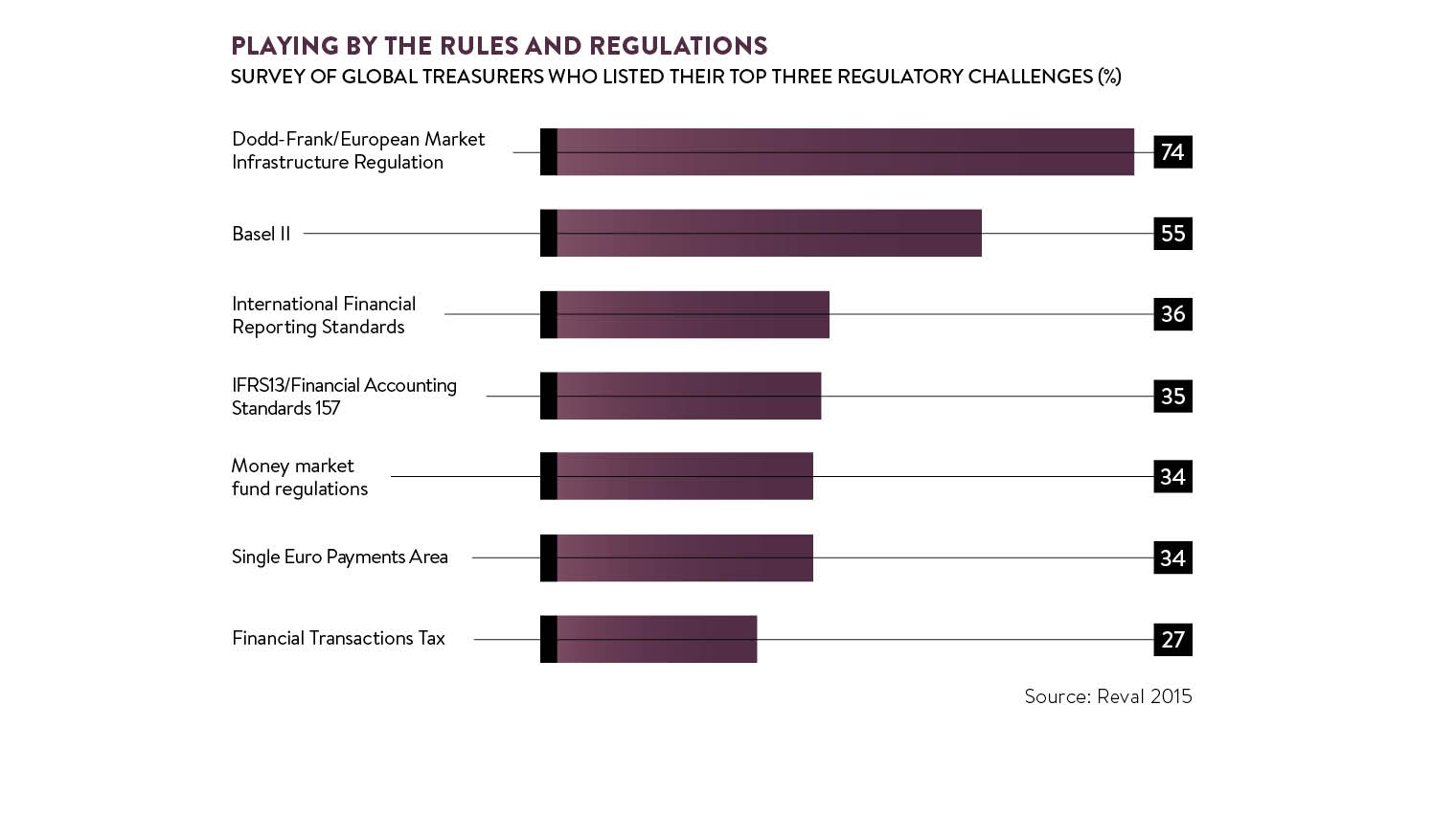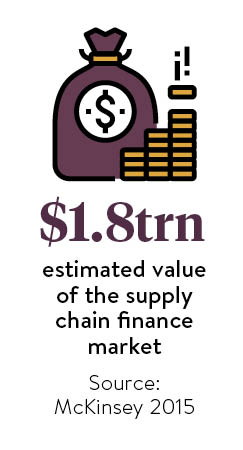Globalisation has driven innovation in the physical supply chain where technology has been widely applied to improve efficiency, replacing the traditional paper trail associated with procurement, stock management and invoicing.
In the wake of the financial crisis, heralding an era of low interest rates, weak growth and a scarcity of bank funding for smaller companies, cautious corporate treasurers have been forced to be more imaginative in the search for ways to improve cash flow and manage risk.
Their focus has turned to ways of harnessing the working capital lying dormant in the supply chain, looking beyond traditional trade finance techniques such as factoring or invoice discounting where an invoice is sold to a third party at a discount.
Evolution of the supply chain
The past decade or so has seen the evolution of so-called supply chain finance in which buyers, suppliers and finance providers are connected through sophisticated software systems that automate and streamline the payment process.
Although the term can be used to cover a broad range of finance techniques, it generally applies to the system that allows a buyer to pay a supplier early in exchange for a discount either directly or tapping funds from a bank or other finance provider, which will set their terms based on the credit rating of the buyer company.
Sometimes referred to as reverse factoring or approved payable finance, it offers the supplier the benefit of improved cash flow, usually on better terms than a bank loan, while the buyer benefits from putting its surplus capital to good use or preserves its cash by using an external funder, gaining a discount in the process.
The big development over the past decade or so has been automation of the process, speeding up payments, reducing the risk of errors from manual handling and above all strengthening the supply chain by reducing the danger of one link breaking because of a shortage of working capital or an inability to secure finance.
For large companies, forging better relationships with suppliers is often a key goal of corporate and social responsibility policy, particularly given the political sensitivities over the vulnerability of small firms to any increase in payment times by bigger companies.
Stephen Baseby, associate policy and technical director at the Association of Corporate Treasurers, says: “Supply chain finance is a term that has come into use as software has developed and created an end-to-end flow.
“We have a situation today where big business can get access to ridiculously cheap money, while smaller businesses are watching their costs go up and up. Supply chain finance can help massage that and assist with liquidity.”

A study by McKinsey in October 2015 estimated that supply chain finance was a $1.8-trillion global market creating a potential revenue pool of $20 billion, of which just $2 billion was currently being captured. It forecast the market would grow at 15 per cent annually to 2020.
McKinsey noted that until 2005 big banks accounted for about 95 per cent of the market, but that fintechs had grabbed a 15 per cent share and were growing rapidly.
The sector was initially focused on multinational corporates and their key suppliers, partly reflecting the reliance on large and expensive computer systems that were needed to run the process.
But a new generation of fintech companies has emerged, exploiting developments such as the cloud and software-as-a-service systems to reach a wider customer base including medium-sized buyer companies and extending into the long tail of small supplier companies.
One of those fast-growing fintechs is PrimeRevenue, set up 13 years ago and now providing a finance hub for hundreds of corporate clients, such as Michelin, Kellogg’s and Sainsbury’s, tens of thousands of suppliers and more than 70 banks around the world.
If you can help the supplier get paid more quickly, it helps cash flow more quickly through the economy and ultimately can help economic recovery
PrimeRevenue chief executive P.J. Bain says its network is enabling suppliers to raise $4 billion a month from selling invoices early. “That’s $4 billion they can invest back into the business if they need to expand into new geographies, buy more inventory, more raw materials, open new facilities, hire more people and create new jobs. It’s an efficient way for them to be able to access cash and grow their business,” he says.
“Five years or so ago, many corporate treasurers may have known the term supply chain finance, but very few were actually using it. Today many are either dipping their toe in the water or trying to learn about it.”
Big banks bite back
This year PrimeRevenue teamed up with business software group SAP Ariba to offer a service that marries their finance and transactional systems.
Drew Hofler, vice president of solutions marketing at SAP Ariba, says: “It provides complete transparency in the entire supply chain from the moment something is sourced by the buyer, to the purchase order going out, goods shipped in and invoice going out.”
 Faced with competition from the fintechs, some of which have brought in insurers, hedge funds and fixed income funds as providers, banks are casting their nets wider, often in collaboration with the new networks, as finance providers and, increasingly, technology partners.
Faced with competition from the fintechs, some of which have brought in insurers, hedge funds and fixed income funds as providers, banks are casting their nets wider, often in collaboration with the new networks, as finance providers and, increasingly, technology partners.
Barclays has launched a new supplier finance service to customers using the PrimeRevenue platform, allowing it to cement relationships with existing clients and reach out to new ones.
Lasma Orlovska, head of open account products at Barclays, says there are huge opportunities for the large banks to step in as finance providers on their own, to participate in deals led by other banks or to link up with fintechs and to reach new customers.
She adds: “There are big opportunities in the non-investment grade segment, working with buyers who were not necessarily on the top of the list for banks to service.”
A 2016 survey of corporate treasurers by banking software provider Misys found that 28 per cent of small and medium-sized enterprises were finding access to finance harder and 9 per cent had a greater reliance on alternative finance than two years ago.
It concluded that banks must step up automation to compete with alternative funding sources and highlighted supply chain finance as a key area where they could forge stronger ties with mid-sized corporations, reducing their risk exposure in the process.
Ben Singh-Jarrold, strategist in corporate banking at Misys, says: “Banks are no longer at the centre, so tellingly corporate treasury is now in a very powerful position.”
Another fast-growing fintech is Taulia, which started in 2009 and now works with more than 100 of the world’s largest companies, including Vodafone, Coca-Cola Bottling and Warner Brothers, which between them have 850,000 suppliers in 161 countries.
Matthew Stammers, European marketing director at Taulia, says technology has opened up the market so that it can now potentially reach down to the smallest suppliers and help them get paid early.
He believes the benefits go way beyond the supply chain, explaining: “It makes the world simpler, which is why it is so compelling. If you can help the supplier get paid more quickly, it helps cash flow more quickly through the economy and ultimately can help economic recovery, one invoice at a time.”
Evolution of the supply chain

Big banks bite back

